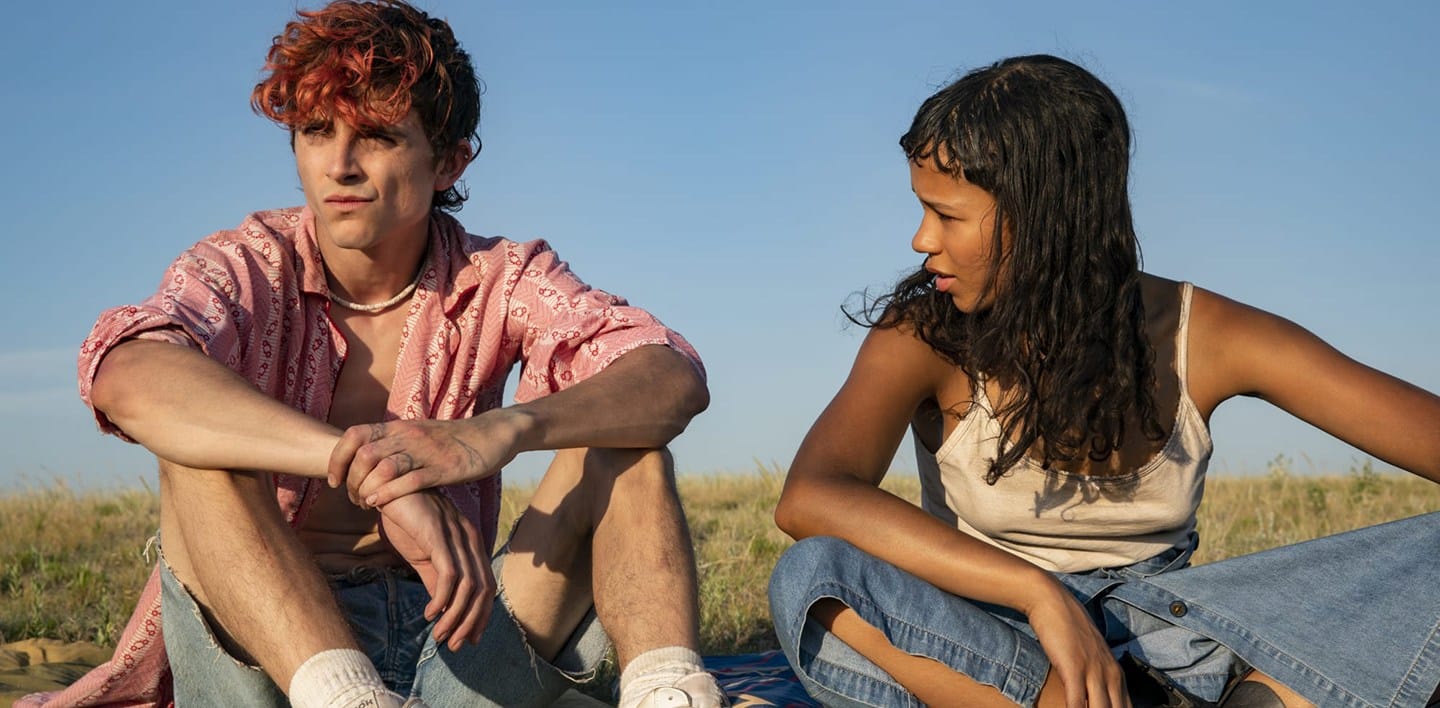
Luca Guadagninofour years later Call me by your name, go back to talking about love and teenagers.
Bones and Allpresented at the Venice Film Festival ’79, was released in Italian theaters on November 23rd and caused a lot of talk.
It is difficult to define the genre of this film, on paper it is the adaptation of the novel of the same name by Camille DeAngelis, which moves in a horror key, being a story about cannibals. Cannibalism is definitely an element that in Bones and All remains impressed, not only because the (strong) scenes are seen but because they are narrated in an unconventional way compared to classic horror. There is no spectacularized violence but it is casually sprinkled throughout the story and framed with great realism.
Defining it as a simple horror is limiting because the feature film They earn it is a melting pot of genres; it’s a story of a first love, it’s a road movie that tells the Midwest of the 80s, Reagan’s America, but it’s also an extreme, great metaphor on the marginalization of the different.
Trama Bones and All
In the mid-1980s, Maren (Taylor Russell) lives with his father (Andre Holland) in Virginia and is apparently a teenager like many others. Soon, however, her cannibal nature comes to light, forcing the parent to abandon her to her fate.
The girl, just eighteen years old, goes in search of her mother (Chloe Sevigny) of which he knows nothing and along the way he meets people like her, of the same nature as her; isolated drifters of American society, including the disturbing Sully (Mark Rylance) and the charming and drifter Lee (Timothee Chalamet), a few years older, with whom he decides to continue the journey. State after state, from Maryland to Nebraska, meeting after meeting, Maren and Lee try to find their place in the world and their way, uncertain and frightened by the uncontrolled surge of desire that guides them.
Symbolic places of feelings
Bones and All seeks to portray the American Midwest and Great Plains with an authentic beauty and vitality that often go unnoticed. It also makes room for all the pain and trauma that vibrates within the invisible confines of these areas.
The landscapes are vast and jaw-dropping, but all that freedom can prove as isolating as it is seductive. These are places blighted by years of entrenched conservative politics, the opioid crisis, homophobia and racism.
Part of the film’s strong sense of dread comes from the setting, where the pain of 1980s economic ruin coats every frame with unnoticeable tension. Bones and All is the first feature film by They earn set entirely in the United States and, like all of his short stories, it is a story that is equally about place and characters.
“I always want to find the balance and tension between character and place,” says the Italian filmmaker.
The director and cinematographer Arseni Khachaturan they effectively capture the Midwest, with shots of diner breakfasts and sweet waitresses pouring coffee in crumbling towns where everyone knows each other.
Despite the grim darkness that hangs over the Midwest, as flat as the plains themselves, there is a special kind of perseverance ingrained in its people.
As much as Midwest is a character in the film, he’s actually just a supporting member of the cast. The region exists to amplify the cannibalistic lovers, at the forefront of the film, with the enormity of its landscape.
Out on the plains, Lee and Maren find themselves racing through forgotten parts of the world, ones made magical by their neglect. In turn, their love feels just as enchanted, until they open their eyes wider, to witness the deterioration all around them.
The fragility of the characters
The protagonists move between states, bonding more and more. In many ways, Bones and All it’s a typical love story, especially one involving two outcasts who find salvation in each other. Lee struggles to balance his need for independence (it’s the result of an abusive relationship with his father) against his wavering idea of goodness. Maren’s entry into his life has brought him love, while also reminding him that his actions are not beyond reproach. The two tiptoe together on the fringes of society, bearing witness to both the black souls who kill without remorse, and the innocence of their unsuspecting victims.
Chalamet e Russell they have a palpable chemistry, but what sets their performances apart is the nuance in how they portray their characters’ vulnerabilities, which manifests itself in different ways. The Maren of Russell she’s more naïve, she’s not used to being completely alone while the Lee’s Chalamet it keeps past traumas and disappointments just below the surface.
They earn it arouses tender and sophisticated performances in its young protagonists;
Violence is never used to make a show and even the most extreme sequences, which are in fact revolting, have a strange poetry. There’s a reason for every gory scene, it’s not gratuitous, even if it’s nauseating.
The other protagonist of the film: cannibalism
The director does not shy away from showing the visceral shock of the characters’ unspeakable impulses: both Maren and Lee spend much of their time smeared with the dried blood of their victims. the act of feeding – tearing with the teeth, diving face deep into the flesh of another human being – is savage, animalistic and full of shame. There is also a palpable menace in the fellow “eaters” they encounter: the grotesque and extraordinary interpretation of Mark Rylance as the creepy loner Sully is particularly noteworthy, as is that of Michael Stuhlbarg who plays a creepy wayfarer.
The protagonists have to carry a real emotional weight; the first time Maren shows her true nature is during a sleepover with friends she’s just met, thus excluding any glimmer of normality from her life.
The importance of details
Luca Guadagnino he is a great aesthete. His cinema is made up of small elements, apparently side by side, which when added together become fundamental and give the whole meaning of the film. And being very careful to communicate feelings through details, this makes his cinema something extremely strong and captivating. Every time you are in front of one of his works, you have a unique sensory experience.
And it’s the same for his latest feature film; whether it’s a plate of pancakes, a record player playing a song by Duran Duran (the 80s are breathed a lot thanks to the beautiful soundtrack) or blood on the hair, every detail is given extraordinary care.
Speech that becomes even more meaningful if you think of the books; if in Call me by your name helium reads theArmance by Stendhal not coincidentally, the same goes for Dubliners by Joyce read by Maren in Bones and Allto incisively affirm the impotence of the condition of the boys in the face of their condition.
Final conclusions
The film is a different proposal from the dreamy and melancholy Italian environment of Call me by your name, but has part of the same DNA of an intoxicating and complicated courtship, as if it were the other side of the same coin. As if the film about cannibals were a different and provocative way of considering an all-encompassing and all-consuming love.
In a sense, Bones and All is a distillation of themes from previous work by They earn. The intertwining of food and erotic appetites relates to I am the love ; the painfully romantic longings of first love (and in Chalamet e Stuhlbarg) are shared with Call me by your name ; lurid gender impulses show the bloody footprints of Sighs.
But in the elegant balance of these seemingly incongruous elements, the director has managed to do a great job.
Source: https://www.movieblog.it/recensione-bones-and-all-il-film-di-luca-guadagnino/?utm_source=rss&utm_medium=rss&utm_campaign=recensione-bones-and-all-il-film-di-luca-guadagnino


